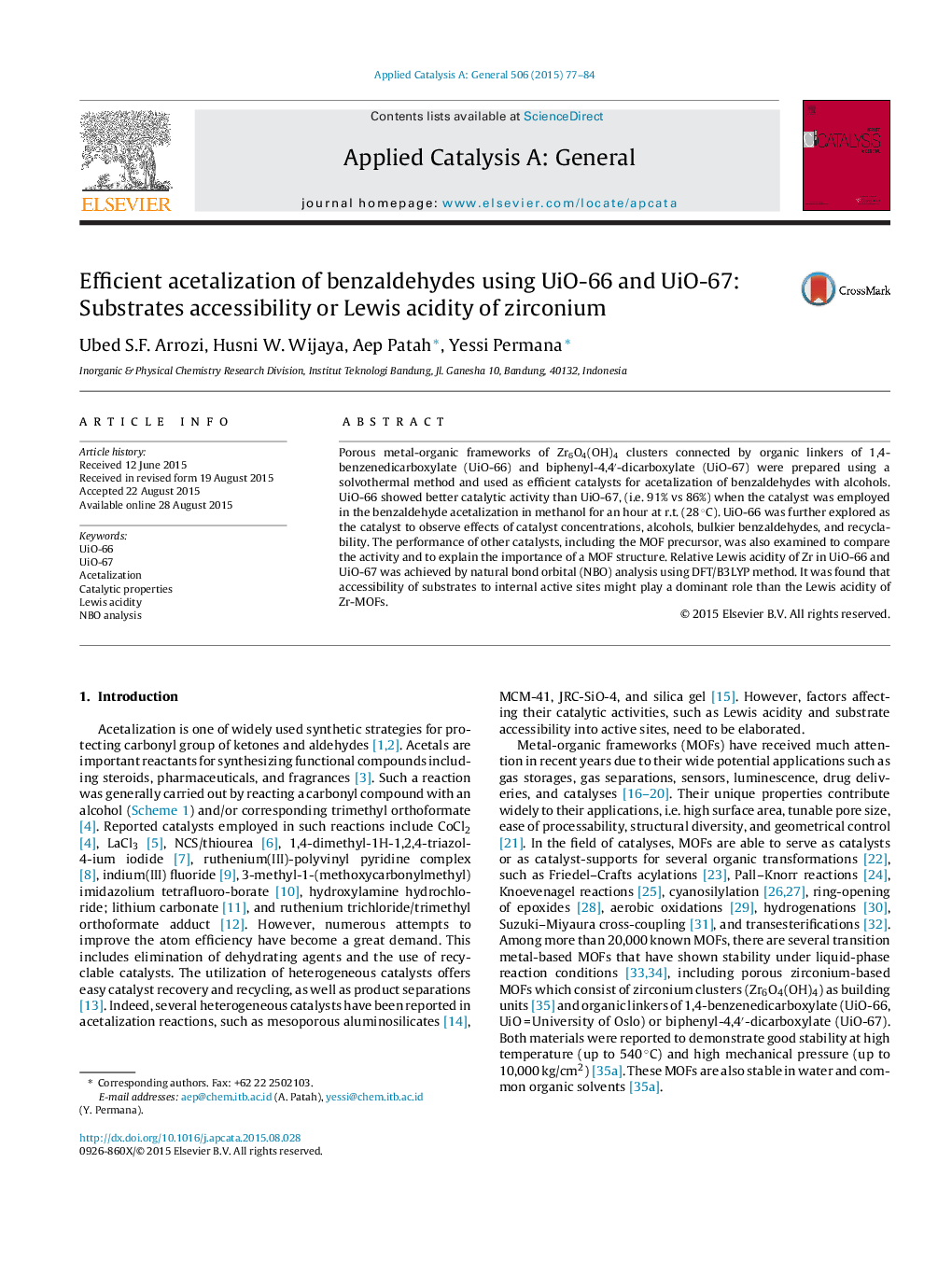| Article ID | Journal | Published Year | Pages | File Type |
|---|---|---|---|---|
| 39045 | Applied Catalysis A: General | 2015 | 8 Pages |
•UiO-66 and UiO-67 were studied in acetalization of benzaldehydes with alcohols.•Effect of nature of linker ligands on Lewis acidity and catalytic properties was studied.•Relative Lewis acidity of Zr in UiO-67 is higher than that in UiO-66.•Reaction rate of acetalizations catalyzed by UiO-66 is faster than that by UiO-67.
Porous metal-organic frameworks of Zr6O4(OH)4 clusters connected by organic linkers of 1,4-benzenedicarboxylate (UiO-66) and biphenyl-4,4′-dicarboxylate (UiO-67) were prepared using a solvothermal method and used as efficient catalysts for acetalization of benzaldehydes with alcohols. UiO-66 showed better catalytic activity than UiO-67, (i.e. 91% vs 86%) when the catalyst was employed in the benzaldehyde acetalization in methanol for an hour at r.t. (28 °C). UiO-66 was further explored as the catalyst to observe effects of catalyst concentrations, alcohols, bulkier benzaldehydes, and recyclability. The performance of other catalysts, including the MOF precursor, was also examined to compare the activity and to explain the importance of a MOF structure. Relative Lewis acidity of Zr in UiO-66 and UiO-67 was achieved by natural bond orbital (NBO) analysis using DFT/B3LYP method. It was found that accessibility of substrates to internal active sites might play a dominant role than the Lewis acidity of Zr-MOFs.
Graphical abstractFigure optionsDownload full-size imageDownload high-quality image (101 K)Download as PowerPoint slide
